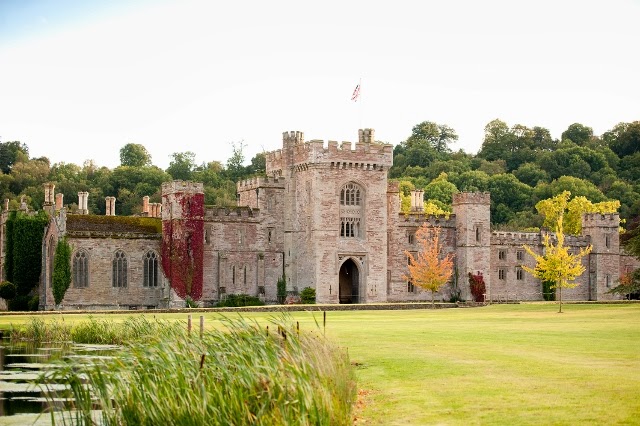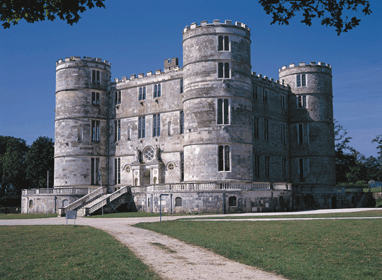It's holiday time! The next 7 counties on the visit list are: Kent, East Sussex, Surrey, West Sussex, Hampshire, Isle of Wight and Dorset.
Next stop is the family home of the evolution genius, Charles Darwin. You can stroll through the garden that inspired him.
Stop number 3
East Sussex is a county that has it's roots in the ancient kingdom of the South Saxons. These people established themselves after the departure of the Romans. The earliest industries in the county have included fishing, iron-making and the wool trade.
Stop number 2
This time we are heading south into the county of Kent. Being a in a coastal location near continental Europe, poor Kent has been the front line for many battles. Industries in Kent include cement, paper making and aircraft construction which are all the decline. It has also been a prominent coal mining location.
This time we are heading south into the county of Kent. Being a in a coastal location near continental Europe, poor Kent has been the front line for many battles. Industries in Kent include cement, paper making and aircraft construction which are all the decline. It has also been a prominent coal mining location.
No matter which county of the UK you are in you will always find an amazing church, abbey or cathedral. And of course the amazing houses and manors. My choice of worship place is Rochester Cathedral.
Next stop is the family home of the evolution genius, Charles Darwin. You can stroll through the garden that inspired him.
Dubbed the most fascinating attraction in the south east, the next stop is at Walmer Castle and Gardens. It was originally apart of a chain of artillery defences but later evolved into a residence. For 23 years The Duke of Wellington was posted here and Queen Elizabeth has made regular visits. Whilst here you can see the chair that The Duke of Wellington died in and a pair of original 'Wellington Boots'
On the road again and stopping at the childhood home of Ann Boleyn - Hever Castle and Gardens.
East Sussex is a county that has it's roots in the ancient kingdom of the South Saxons. These people established themselves after the departure of the Romans. The earliest industries in the county have included fishing, iron-making and the wool trade.
First stop is at St Clements Caves. The caves were formed during the last ice age and have since served as homes, a hospital, an air-raid shelter and a ballroom. They have been visited by many including the Rolling Stones and The Royal Family. Today the caves depict the dark and bloody story of the smuggling along the Sussex coast.
A hop, skip and jump down the road is Hastings Castle. This was the first motte and bailey castle to be built here. In 1066, when William the Conqueror landed in England, her ordered for Hastings Castle to be built. It has a crazy past: King Henry VIII had the Castle church destroyed, by the 1800's it was buried in undergrowth, it was heavily bombed during World War II and in 1951 it was bought for 3000 pounds.
Next stop is Michelham Priory which boasts England's longest water filled moat surrounds, dating back to 1229. There is a magnificent Tudor mansion, impressive gatehouse, a functioning watermill and forge, Bronze Age roundhouse, great barn and dovecote. You can relax in the 7 acres of gardens and grounds. Explore the many years of history in the house.
A small photographic detour to the Long Man of Wilmington is next. For hundreds of years the guardian of the South Downs has baffled all. The giant is 235 feet tall.
Time for another castle, there is always time for castles! This time we're at Bodiam Castle, a 14th century moated castle. It has spiral staircases, battlements, a portcullis, windows where arrows were fired from and a tower. We must remember to check out the murder holes in the gatehouse, soldiers used them as an attack method.
Stop number 4
Now we're off to Surrey. Possibly the biggest historical thing to happen in Surrey is the signing of the Magna Carta, which happened on the 15 June 1215. The county is also the home to the oldest working windmill in England, the Outwood Windmill built in 1665.
It's not the prettiest of cathedrals' but it is one. This is Guildford Cathedral which was built from 1936, with a period of no work during World War II.
The next stop is the beautiful Loseley Park. The amazing thing about this house is that very little has changed since the 16th century. The house is built of reclaimed stones from the Cistercian Abbey of Waverley. 500 years later, the original family still resides here. Along with the house there is a 2.5 acre walled garden with over 1000 rose bushes.
Stepping things up, we're off to Hampton Court Castle and Grounds, a 15th century medieval castle. The original quadrangle manor house was built in 1427. The house was then re-modelled in the 1830's. On sight there are original Victorian garden walls, a yew tree maze and a waterfall in the sunken garden.
On the buses, hehe! Sorry corny reference I know. Anyway, our next stop is at the London Bus Museum. This is the largest collection of working London buses, representing 100 years of public transport in the capital. It's great because the display is in chronological order. There are double-decker buses, coaches, single-deck buses and service vehicles.
Stop number 5
Today's holidays stop, and the 5th instalment, is in West Sussex. Over 50% of the county of is protected countryside with it be founded in Anglo-Saxon period. It is also officially the sunniest county in the UK.
Cissbury Ring is the second-largest early iron age fort dating from 1000 to 400BC. It consists of nearly 80 acres. Long before the fort was constructed, Cissbury was the sight of a flint mine.
Arundel Castle is the next port of call. The castle was built in the 11th century by Roger de Montgomery. During the civil war the castle was badly damaged and wasn't fixed until 1718.
The Weld and Downland Open Air Museum is next. The museum is the new home for many historic buildings from south east England, spanning the period 1300-1910, which over the years have been transported because they were facing destruction. The buildings are in an 50 acre plot with many cute animals. Some of the buildings include a 13th century peasant house, a late medieval 'Weldon' hall house, a 17th century cottage, Victorian railway workers cottages and a working water mill.
This gorgeous but rather imposing building is the Lancing College Chapel. The magnificent Gothic chapel was founded in 1868 and consecrated in 1911. Features include the stain glass windows, stall canopies, the brass lectern, bronze candlesticks and tapestries.
Stop number 6
County number 6 is Hampshire! Hampshire is the home to the former English capital, Winchester. This region of the UK is believed to have been occupied since the end of the last ice age. In 43CE the Romans invaded Britain and Hampshire was incorporated into the Roman province of Britannia.
The first stop is at the home of popular novelist Jane Austen. 'Chawton' is where Jane spent her last 8 years. It is an important building, as this is where she did the majority of her mature writing. The house was built in the 17th century.
Another literary stop is at the Charles Dickens Birthplace Museum. The interior has been lovingly re-created in the Regency style. The house contains 3 furnished rooms: the parlour, the dining room and a bedroom. There are some items that are actually his possessions from later in life including the couch that he passed away on.
Next we're off to Basing House. This was a Tudor palace and castle built in 1531. Today only the foundations and earthworks remain.
Now it's off to the Royal Victoria Country Park. The Royal Victoria Hospital was built in 1856 as the British Army's first purpose built hospital. Today the chapel is all that remains of the hospital.
Stop number 7
Look out Isle of Wight, here we come! The Isle is located 5-8km off the coast of Hampshire. There are several resorts on the island that have been in use since Victorian times. For a brief period during the 15th century the Isle had independent kingdom status.
Whilst on the island we are planning to visit Carisbrooke Castle. The castle is best known for being the place where King Charles I was imprisoned. The building of the castle commenced around 1100. Princess Beatrice made the castle her summer home after 1914.
The next amazing house on the trip is Osborne, the seaside palace residence of Queen Victoria, Prince Albert and their 9 children. The house was built between 1845 and 1851 for the Queen by by Thomas Cubitt. After the Queens death part of the house became a convalescent home and there was a naval college in the grounds. In 1986 English Heritage assumed control of the property and have spruced the house up a lot.
After all the driving around it must be time to kick off the shoes and just laze around a beach for a while. And what better beach than Freshwater Bay, the most picturesque beach on the island. The beach is a grey flint and chalk pebble beach and is surrounded by chalk cliffs.
Stop number 8
Next county to visit is Dorset. The county has a long history of human settlement going back to the Neolithic era.
It's castle time to start with, first off is Lulworth Estate. The castle on sight was built in the early 17th century as a hunting lodge for the king and court. The exterior of the castle has changed very little but the interior has changed to match fashions. In 1929 it was gutted by fire and restorations were completed in 1998.
Ready for Kingston Lacy!
Kingston Lacy was the Bankes Family home from the 17th to the late 20th centuries. It was built between 1663 and 1665. Minor alterations were done in the 1820s and then extensively remodelled was under taken from 1835 till 1838.
Until next time


























Comments
Post a Comment